Rockets and Space Planes Could Deliver Troops to Battlefields in Hours
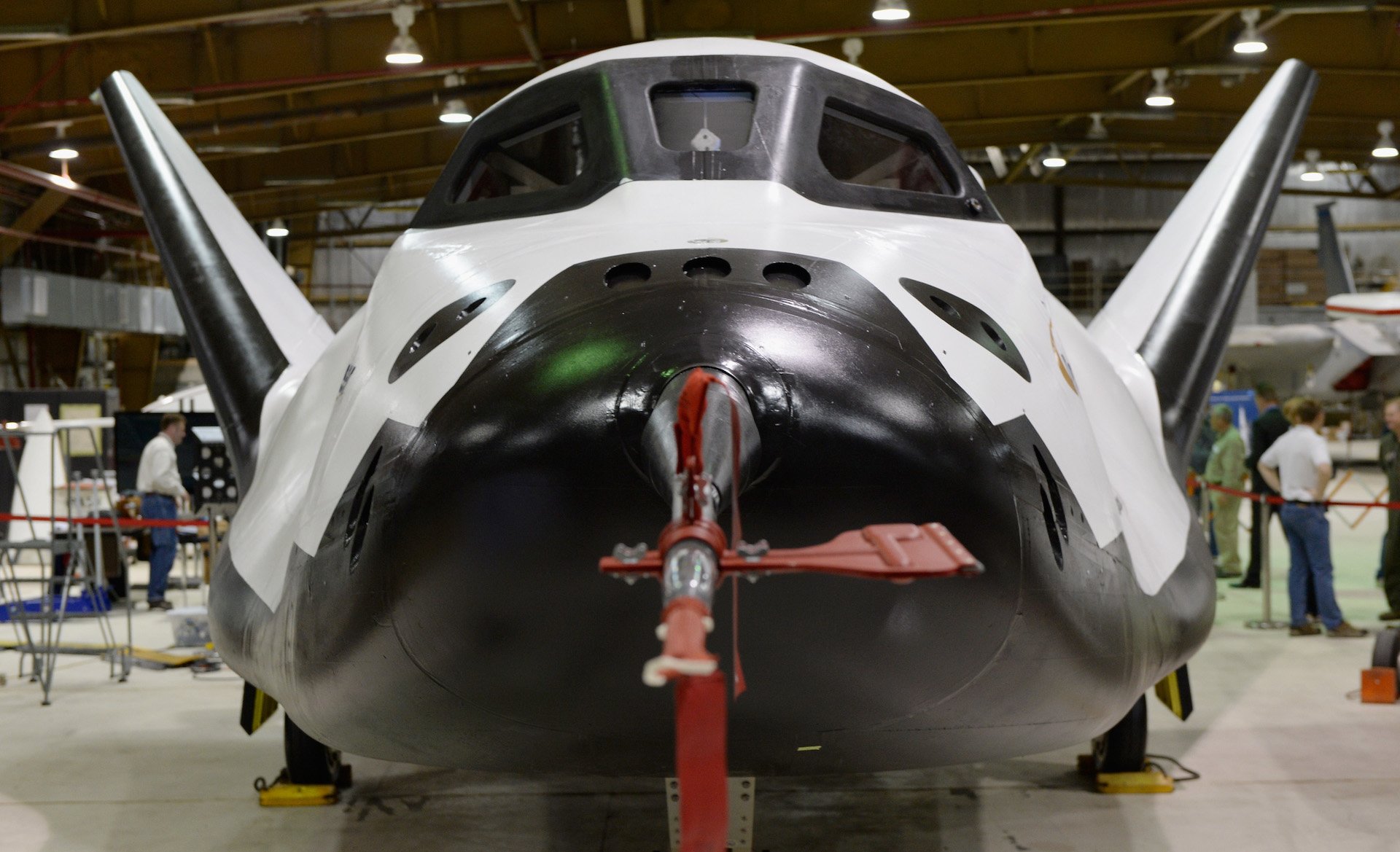
The Dream Chaser prototype space-access vehicle, built by the Sierra Nevada Corporation's Space Systems, at NASA's Dryden Flight Research Center on May 22, 2013. Photo by Kevork Djansezian/Getty Images.
Within a decade, soldiers responding to humanitarian disasters or even high-stakes special operations missions could load a C-17 cargo plane’s worth of weapons, equipment, and vehicles into commercial rocket ships, blast briefly into space, and land at a battlefield or disaster anywhere on Earth in less than an hour.
The Air Force's Rocket Cargo program is tasked with making that sci-fi vision of deployments a reality. It's a joint program between the Air Force, Space Force, and the Defense Department’s Transportation Command, or TRANSCOM, which is the primary agency responsible for moving troops and cargo all over the world.
“Imagine traveling from the continental United States to anywhere in the Pacific region and measuring your transit time in minutes,” an Aug. 19 USTRANSCOM press release reads.
In 2020, the commander of TRANSCOM, Gen. Stephen R. Lyons, discussed moving troops by rocket.
“Think about moving the equivalent of a C-17 payload anywhere on the globe in less than an hour,” Lyons said. “Think about that speed associated with the movement of transportation of cargo and people."
The Air Force's program has development agreements with SpaceX and Blue Origin and recently added three more space-focused companies: Virgin Orbit National Systems, Rocket Lab, and Sierra Space. All are developing systems aimed at cargo and personnel delivery, though with different designs.
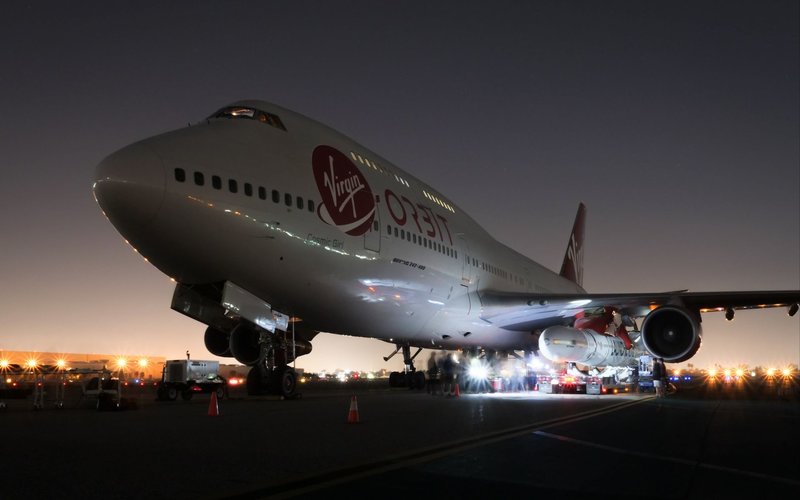
Lonestar, a technology demonstrator designed to provide space-based situational awareness directly into the hands of the tactical warfighter, lifts off from Mojave Air and Space Port as a payload aboard Virgin Orbit’s LauncherOne two-stage orbital air-launch vehicle July 1, 2022. Photo courtesy of Army Space and Missile Defense Command.
Virgin Orbit National Systems' approach mirrors the civilian Virgin Galactic, a space plane for civilian passengers. Both systems are designed to launch space-bound rockets from the bottom of in-flight jets. By catching a ride on a conventional jet, the Virgin flights skip past the initial liftoff phase, drastically reducing the size of the rockets and the amount of fuel needed. Additionally, these rockets don’t need huge launch pads and other launch infrastructure. They just need a runway.
So far, Virgin Orbit National Systems’ parent company has successfully launched five rockets into space from a Boeing 747.
Meanwhile, Rocket Lab is developing rockets to transport cargo around the world and to a storage depot in space. Rocket Lab’s Electron rocket, which debuted in 2017, can deliver almost 700 pounds to low Earth orbit, but its Neutron rocket, which hasn’t yet launched, will be able to deliver almost 29,000 pounds.
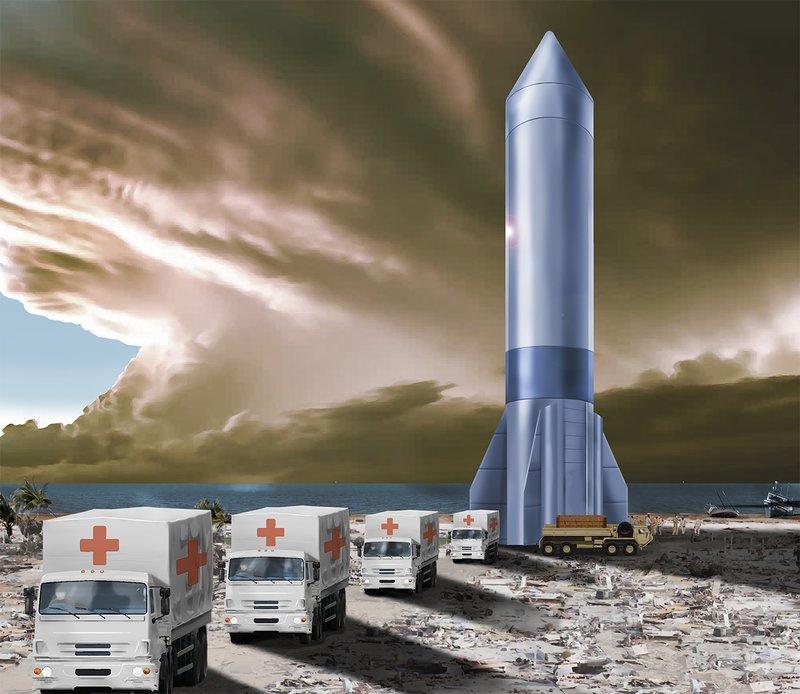
An Air Force illustration of humanitarian supplies delivered by rocket.
Sierra Space enters with designs of a space plane, known as Dream Chaser, that will launch on a vertical rocket but land on a runway, similar to the Space Shuttle. The Dream Chaser Cargo System spacecraft is currently under construction in Colorado, and the company says it will debut next year, when it will start flying NASA resupply missions to the International Space Station.
Sierra Space says its space plane could reach anywhere on earth within three hours of launch.
Delivering cargo and possibly future soldiers by rockets is one of four major futuristic projects the Air Force calls its Vanguard programs — high-tech projects meant to give the US military an edge in future wars. The others are: Golden Horde Colosseum, Skyborg, and Navigation Technology Satellite-3, or NTS-3, a GPS-like navigation network.
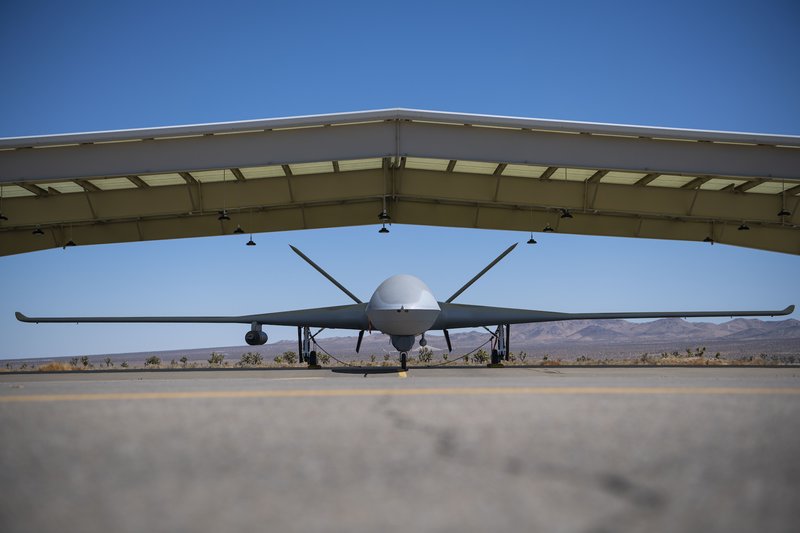
A General Atomics MQ-20 Avenger unmanned vehicle prepares to start up at El Mirage Airfield, California, June 24, 2021. The Skyborg team conducted a multiple-hour flight test of the Skyborg Autonomy Core System aboard the General Atomics MQ-20 Avenger unmanned vehicle during Edwards Air Force Base’s Orange Flag 21-2. Air Force photo by Staff Sgt. Tabatha Arellano.
Golden Horde set out to test the Air Force's own swarming weapons, which are “smart” weapons programmed to work together and take out targets, but the project has morphed into the Golden Horde Colosseum, a digital arena for vendors to test their own swarming weapons.
Skyborg’s goal is to develop aerial drones that can act as wingmen in a fighter jet formation, reducing jet costs, and NTS-3 is a navigation satellite that will launch in 2023 as the next generation of the global positioning system, or GPS.
Read Next: A Russian ‘Inspector’ Satellite Is Chasing an American Spy Satellite Across the Sky
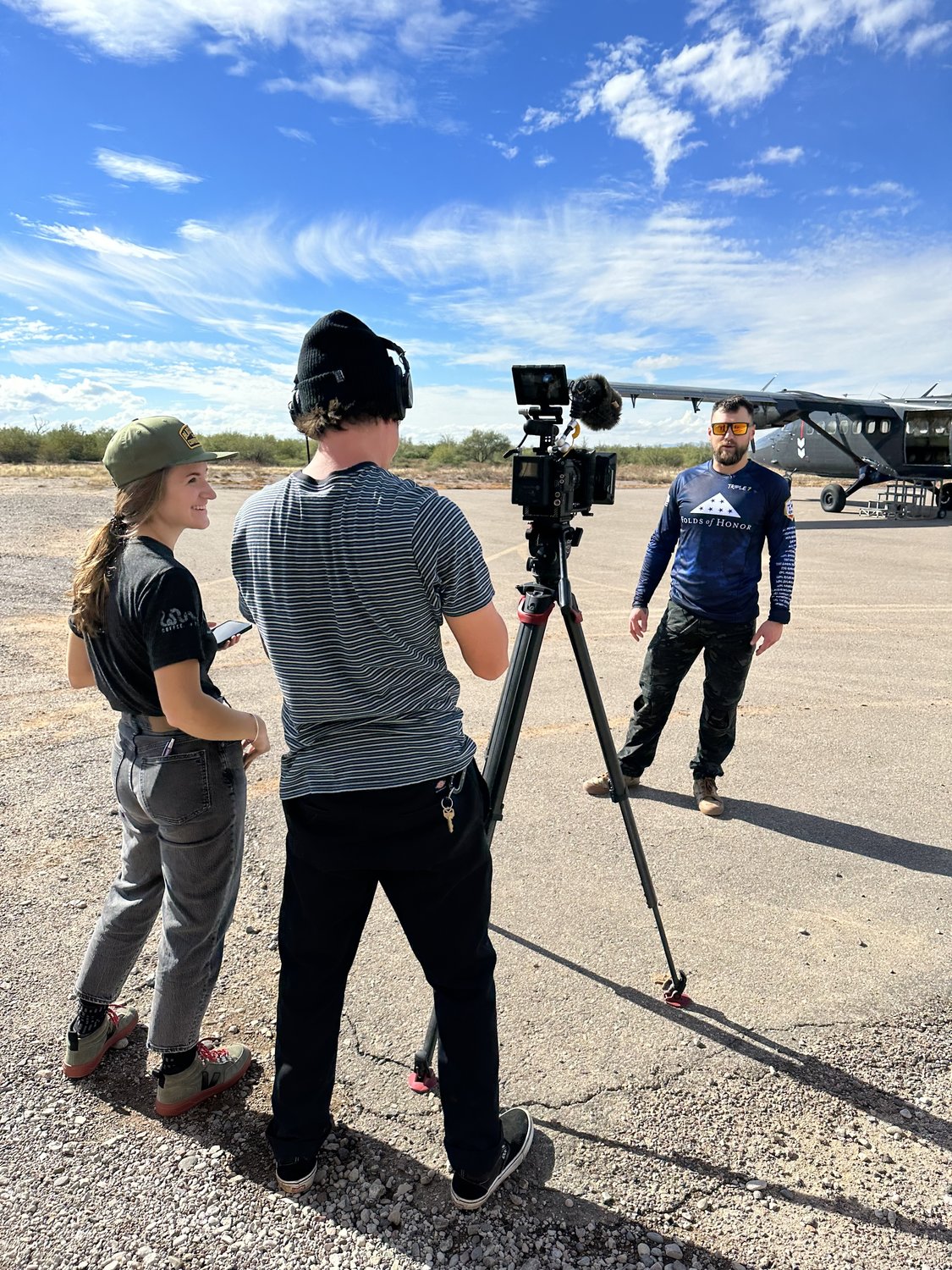
Jenna Biter is a staff writer at Coffee or Die Magazine. She has a master’s degree in national security and is a Russian language student. When she’s not writing, Jenna can be found reading classics, running, or learning new things, like the constellations in the night sky. Her husband is on active duty in the US military. Know a good story about national security or the military? Email Jenna.
BRCC and Bad Moon Print Press team up for an exclusive, limited-edition T-shirt design!
BRCC partners with Team Room Design for an exclusive T-shirt release!
Thirty Seconds Out has partnered with BRCC for an exclusive shirt design invoking the God of Winter.
Lucas O'Hara of Grizzly Forge has teamed up with BRCC for a badass, exclusive Shirt Club T-shirt design featuring his most popular knife and tiomahawk.
Coffee or Die sits down with one of the graphic designers behind Black Rifle Coffee's signature look and vibe.
Biden will award the Medal of Honor to a Vietnam War Army helicopter pilot who risked his life to save a reconnaissance team from almost certain death.
Ever wonder how much Jack Mandaville would f*ck sh*t up if he went back in time? The American Revolution didn't even see him coming.
A nearly 200-year-old West Point time capsule that at first appeared to yield little more than dust contains hidden treasure, the US Military Academy said.












